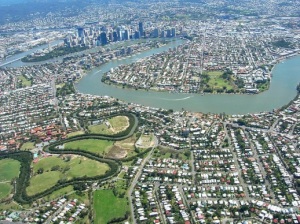Abstract: "Urban landscapes are increasingly recognized as providing
important ecosystem services (ES) to their occupants. Yet, urban ES assessments
often ignore the complex spatial heterogeneity and land-use history of cities.
Soil-based services may be particularly susceptible to land-use legacy effects.
We studied indicators of three soil-based ES, carbon storage, water quality
regulation, and runoff regulation, in a historically agricultural urban
landscape and asked (1) How do ES indicators vary with contemporary land cover
and time since development? (2) Do ES indicators vary primarily among
land-cover classes, within land-cover classes, or within sites? (3) What is the
relative contribution of urban land-cover classes to potential citywide ES
provision? We measured biophysical indicators (soil carbon [C], available
phosphorus [P], and saturated hydraulic conductivity [Ks]) in 100 sites across
five land-cover classes, spanning an ~125-year gradient of time since
development within each land-cover class. Potential for ES provision was
substantial in urban green spaces, including developed land. Runoff regulation
services (high Ks) were highest in forests; water quality regulation (low P)
was highest in open spaces and grasslands; and open spaces and developed land (e.g.,
residential yards) had the highest C storage. In developed land covers, both C
and P increased with time since development, indicating effects of historical
land-use on contemporary ES and trade-offs between two important ES. Among-site
differences accounted for a high proportion of variance in soil properties in
forests, grasslands, and open space, while residential areas had high
within-site variability, underscoring the leverage city residents have to
improve urban ES provision. Developed land covers contributed most ES supply at
the citywide scale, even after accounting for potential impacts of impervious
surfaces. Considering the full mosaic of urban green space and its history is
needed to estimate the kinds and magnitude of ES provided in cities, and to
augment regional ES assessments that often ignore or underestimate urban ES
supply."
Ziter, C. and
Turner, M. G. (2018), Current and historical land use influence soil-based
ecosystem services in an urban landscape. Ecological Applications.
doi: 10.1002/eap.1689

